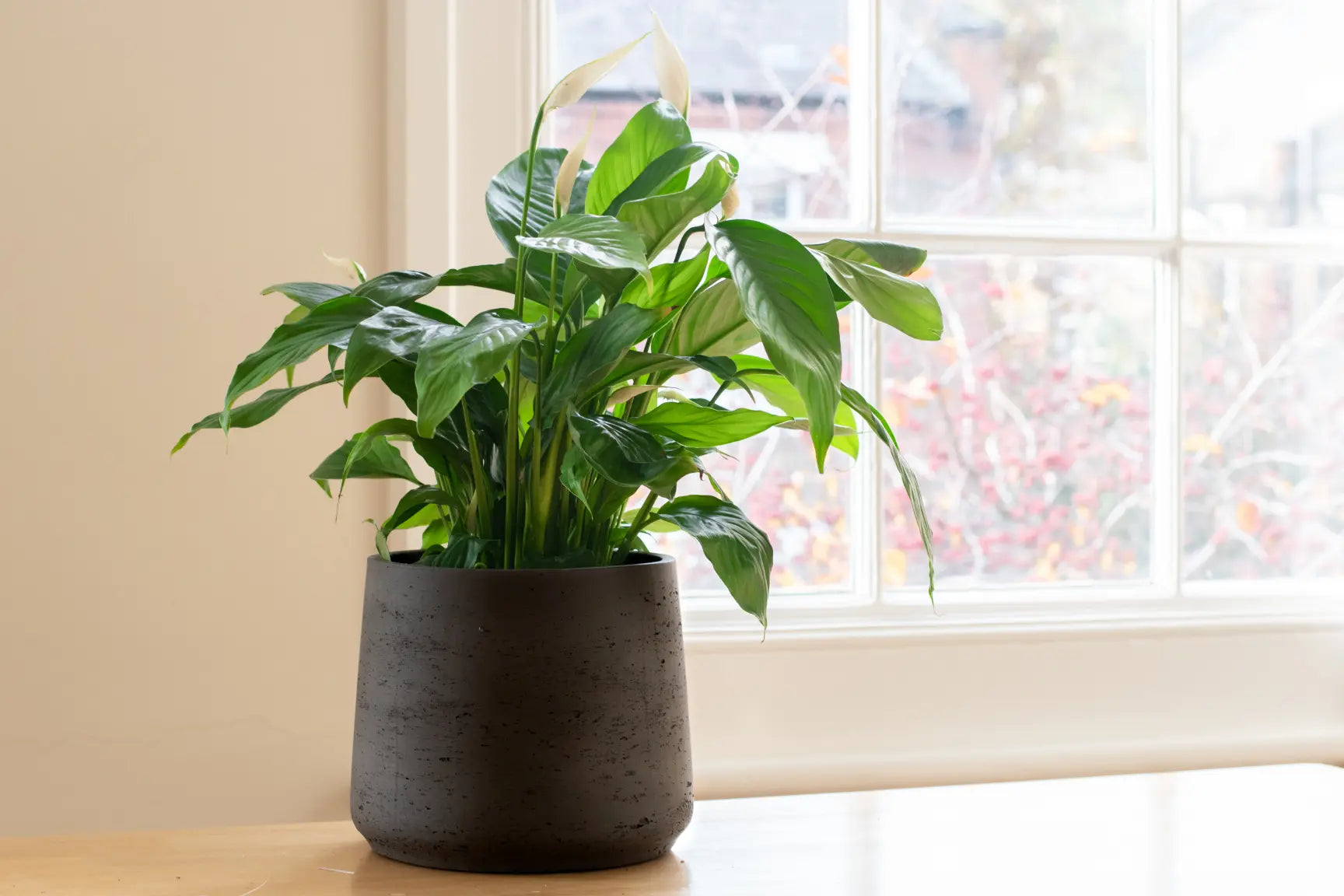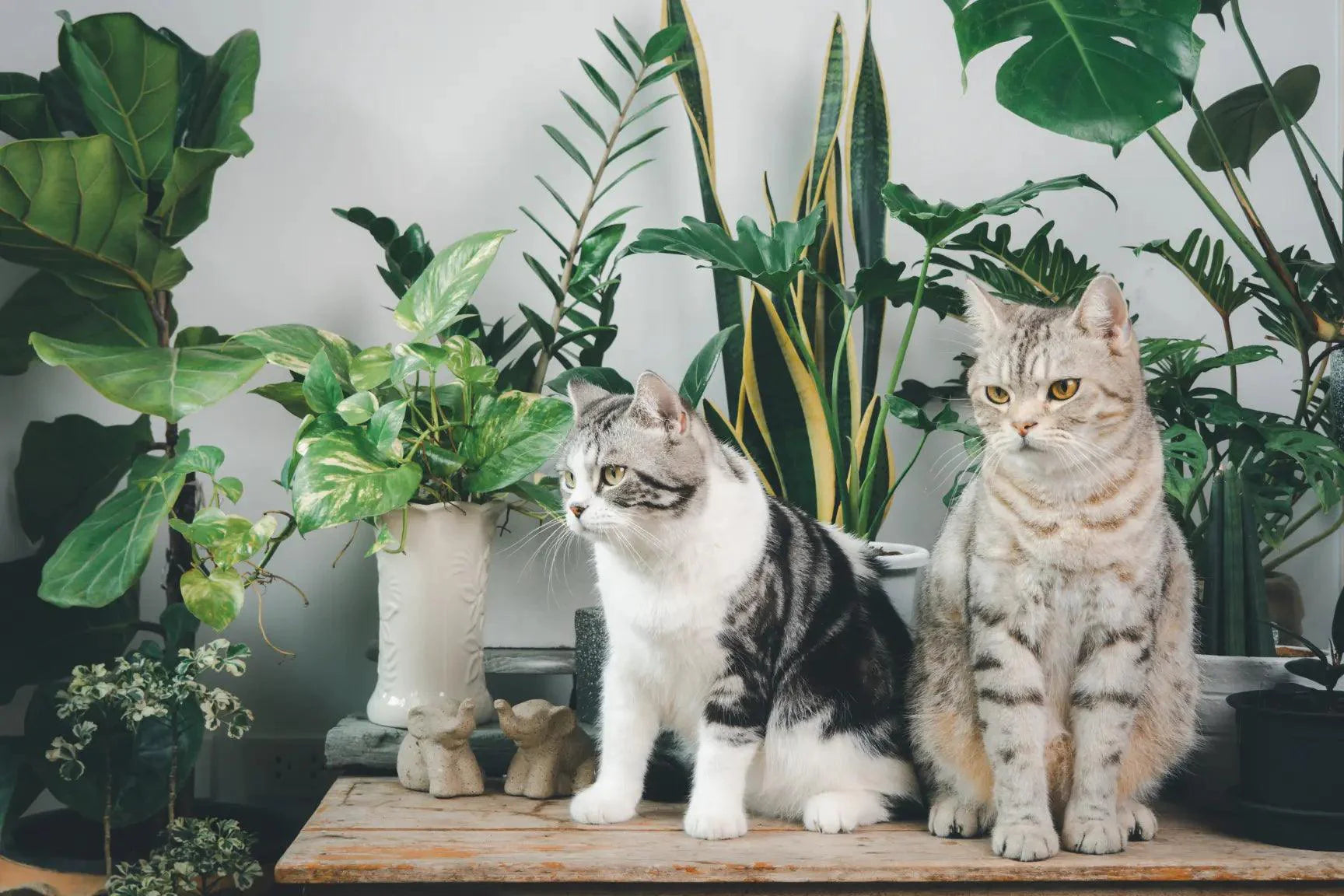Cats are naturally inquisitive creatures and enjoy exploring every nook and cranny of their surroundings, including the plants we keep indoors. While plants can add beauty and calmness to our homes, selecting safe plants for our feline friends is essential. Your household plants may be toxic to cats and cause symptoms ranging from mild gastrointestinal distress to severe reactions. In this article, we will recommend some indoor plants that are both visually appealing and safe for our beloved cats.
Peace Lily (Spathiphyllum)

The Peace Lily is a commonly chosen indoor plant safe for cats. It's an elegant plant with green leaves and stunning white flowers that imbue tranquility in homes. It also improves indoor air quality by eliminating toxins like formaldehyde and benzene. These harmful substances can be found in everyday items such as cleaning products, furniture, and paint. By having a Peace Lily in your home, you can easily breathe, knowing that the air around you is cleaner and healthier for you and your beloved cat.
Peace Lily: Easy Care Tips
To ensure that your Peace Lily plant remains healthy and flourishes, here are some simple care tips that you can follow:
- Place your Peace Lily where it can receive bright, indirect sunlight.
- You need to keep the soil evenly moist but not waterlogged. You can water your Peace Lily once the top inch of soil feels dry.
- Peace Lilies prefer temperatures between 65-80°F (18-27°C).
- They thrive in higher humidity levels, so misting the leaves or placing a nearby tray with water can help.
Following these care tips will ensure your Peace Lily stays happy and healthy!
Spider Plant (Chlorophytum comosum)

Spider Plant is an excellent, non-toxic indoor plant choice for cat parents. This plant has long, arching leaves with elegant white stripes that add interest to any space. Spider Plants are low-maintenance and can thrive in various lighting conditions, which makes them an ideal choice for beginners. Ensure the soil is evenly moist for optimal growth, and place the plant in bright light.
Spider Plant: Growing and Maintenance Guide
Spider Plants are low-maintenance plants. These hardy plants thrive in bright indirect light but tolerate lower light conditions. Spider Plants are known for producing "babies" or plantlets that can be propagated. Remove yellow or dead leaves to keep your Spider Plant looking its best.
Boston Fern (Nephrolepis exaltata)

Boston Ferns are a popular houseplant due to their lush and feathery fronds, which add elegance to any indoor space. Even better, they are safe for cats and are known to improve indoor air quality by removing pollutants. Boston Ferns are a great choice if you're looking for a way to add some greenery to your home without worrying about your cat's safety!
Boston Fern: Watering and Light Requirements
Boston Ferns are ideal for indoor spaces with low to moderate light levels, as they prefer indirect or filtered light. They thrive in humid environments, so it is recommended to mist the leaves regularly or place a tray of water nearby to maintain humidity. The top inch of soil should be dry first before watering.
Areca Palm (Dypsis lutescens)

Also called butterfly palms, Areca Palms have graceful arching fronds and are popular for adding a tropical vibe to indoor spaces. It is non-toxic to cats and requires low maintenance. Butterfly palm thrives in bright light and is a great choice for cat owners who want a pet-friendly indoor plant. Not only does it add beauty to your home, but it's also safe for your feline companion. With regular misting and bright, indirect light, the Areca Palm will thrive in your space while purifying the air.
Areca Palm: Humidity and Temperature Needs
The Areca Palm grows well in areas with high humidity, making it ideal for bathrooms or kitchens. It prefers temperatures between 65-75°F (18-24°C), making it suitable for most indoor spaces.
Money Tree (Pachira Aquatica)

The Money Tree has a positive effect on cats. Its large and vibrant leaves provide visual stimulation, keeping cats entertained and engaged. Moreover, the Money Tree also purifies the air, thus improving indoor air quality, which benefits cats and humans. Therefore, cats can safely enjoy the benefits of this visually appealing plant.
Money Tree: Pruning and Propagation Tips
Regular pruning is highly recommended to keep your Money Tree looking healthy and attractive. Removing any yellow or dead leaves to promote healthy growth is essential. You can also trim back long stems to maintain a compact shape.
Propagation of Money Trees is relatively easy - all you need to do is take a stem cutting and put it in water until the roots develop. Once the roots are well developed, transfer to a pot filled with well-draining soil. Regular pruning is recommended to keep your Money Tree looking its best.
Other Cat-Friendly Indoor Plants

- Bamboo Palm (Chamaedorea seifrizii): The bamboo palm is a compact plant with slender stems and delicate fronds that thrive in low light conditions. It is a safe option for cat owners with limited space.
- African Violet (Saintpaulia): African violets are popular houseplants with vibrant flowers and a compact growth habit. They are non-toxic to cats and come in a variety of colors. With proper care, they can bloom year-round.
- Calathea (Calathea spp.): Calatheas are often called "prayer plants" due to their upward-folding leaves at night. They have striking foliage patterns and prefer bright, indirect light and consistent humidity.
- Friendship Plant (Pilea involucrata): The Friendship plant, also known as the "pancake plant," has round, coin-shaped leaves that grow on trailing stems. It is safe for cats, easy to care for, and thrives in bright, indirect light.
- Peperomia (Peperomia spp.): Peperomias are a diverse group of plants with thick, succulent-like leaves in various shapes, sizes, and colors. Non-toxic to cats, they are low-maintenance plants that prefer moderate to bright indirect light.
- Parlor Palm (Chamaedorea elegans): The parlor palm is popular for indoor spaces due to its elegant, upright growth habit and soft, feathery fronds. It is also safe for cats, tolerant of low-light conditions, and helps purify the air in your home.
- Haworthia (Haworthia spp.): Haworthias are small, compact succulents with rosettes of fleshy leaves in various textures and patterns. They are non-toxic to cats, easy to care for and thrive in bright, indirect light.
Conclusion

Many indoor plants are safe for cats to be around. Peace Lily, Spider Plant, Boston Fern, Areca Palm and Money Tree are great options that can add beauty to your home without posing any risk to your furry friend. However, it's important to remember that each plant has specific care requirements that must be researched and followed to ensure their well-being. Remember to double-check before introducing any new plants to your home. Happy indoor gardening!





















